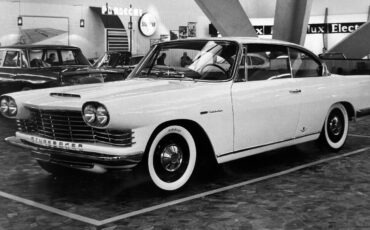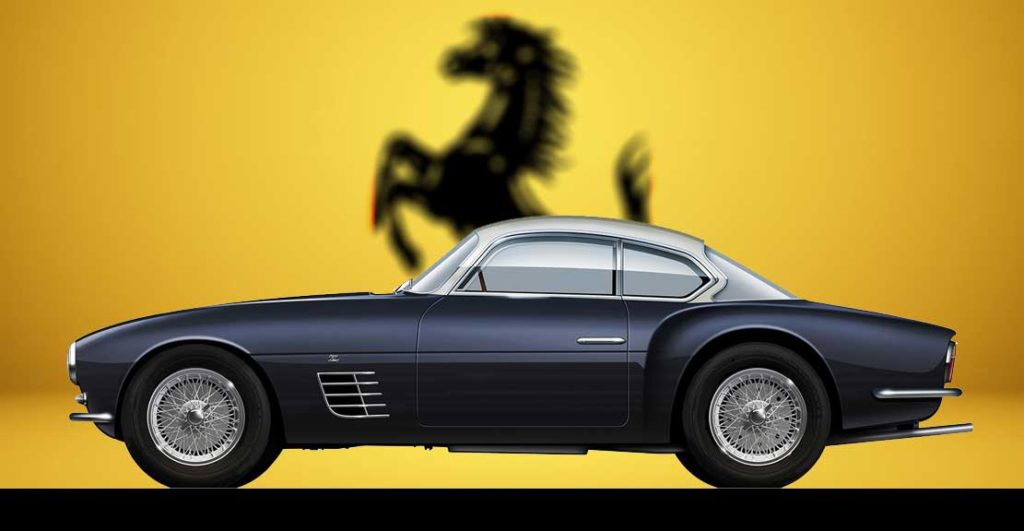
Ferrari and Zagato have crossed paths several times, and each occasion has generated something special and unique. These contacts have always arisen out of meetings, on a personal and an industrial level, between two important figures in the automotive world: Enzo Ferrari and Ugo Zagato. It is a relationship that has produced proposals and projects which have never progressed, but above all a number of unique models. However, most of the Ferrari Zagatos were the result of the intervention of racing drivers and gentlemen drivers, who demanded from their Ferraris that extra something, a mixture of lightness and aerodynamic efficiency, that Zagato expressed with such outstanding skill. The Ferrari Zagatos are unique because the combination of the prancing horse on the bonnet and the Z on the side brought together prestige and performance, elegance and sportiness.
166 MM Panoramica 1949
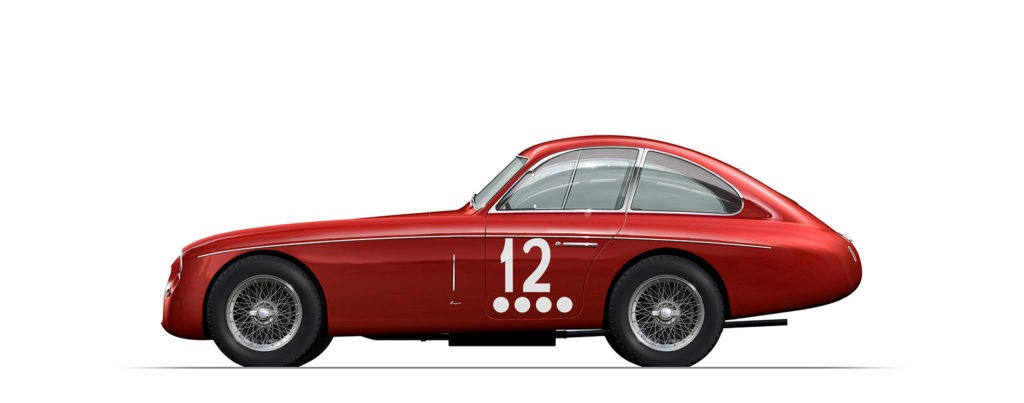
The first working Ferrari designed by Zagato was the 166 MM Panoramica. It was 1949, and among many experiments, Ugo Zagato was working on a series of “Panoramica” cars. The basic concept of this type of car was to optimise visibility and therefore driveability and interior comfort, by introducing a number of important features. The tail was given the difficult task of linking the central section of the car with the waistline and the sides which remained low and racy. The car emerged from a proposal put forward by Antonio Stagnoli to Ferrari himself, to have Zagato work on a chassis for a car that was destined from the start to race and to win. Apparently it all came about because Elio Zagato, a rookie pilot at the time and Stagnoli’s team mate, had seen the potential of a Ferrari Panoramica bearing his own surname.
166 MM Barchetta 1951
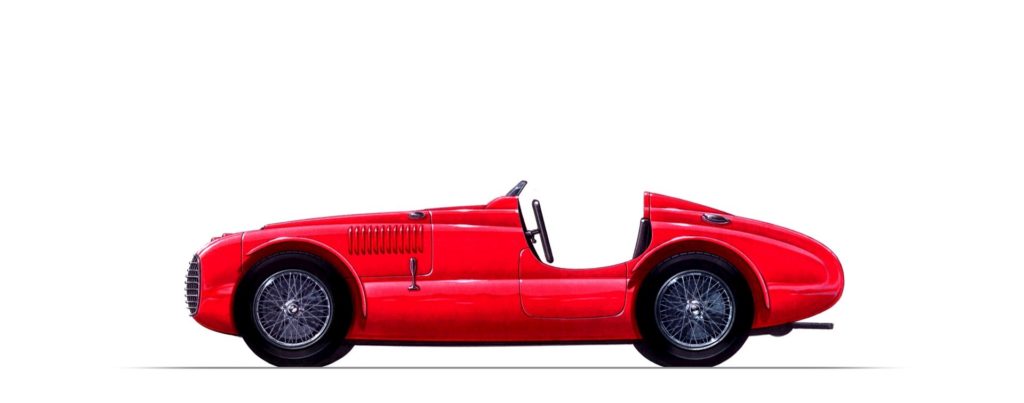
Stagnoli decided to change the body of the already competitive Panoramica into a “barchetta” inspired by a Formula one car of the day. The car looked like an extremely racy torpedo with four individual mudguards, similar to those of a motorcycle, over the large spoked wheels. The line had less personality than the previous version, both because of the type of car and because some of Zagato’s distinctive features were missing. However, the designer’s touch was obvious, and it was confirmed by the memories of Gianni and Elio Zagato. This Ferrari also notched up several victories, winning the Coppa d’oro in Sicily and Tuscany, the Varese- Campo dei fiori and the Bolzano-Mendola. The premises created by the first two Zagato bodies on Ferrari chassis were certainly promising, a fact confirmed in 1953 when the third Ferrari Zagato appeared: the open-bodied 166 MM.
166 MM Elaborata 1952

The story of the creation of this car differs from that of the first two 166s, in spite of having the same number. This time, instead of starting from a chassis, Zagato started from an open body, in this case by Touring, to create a coupe, working in particular on the roof and the rear end. The car was built for Luigi Bosisio, who was part of the same stable as Stagnoli and Zagato: the Sant’Ambroeus. The car clearly conveyed its origins, particularly in the obvious veining that linked the front and rear wheelarches that was borrowed from the Touring 166. The rear axle protruded slightly more than on the Panoramica and was less aligned than the straightforward two-box design of the former model, with a lower tail that pointed downwards, a characteristic of this version.
250 GTZ Berlinetta #0512 GT 1956
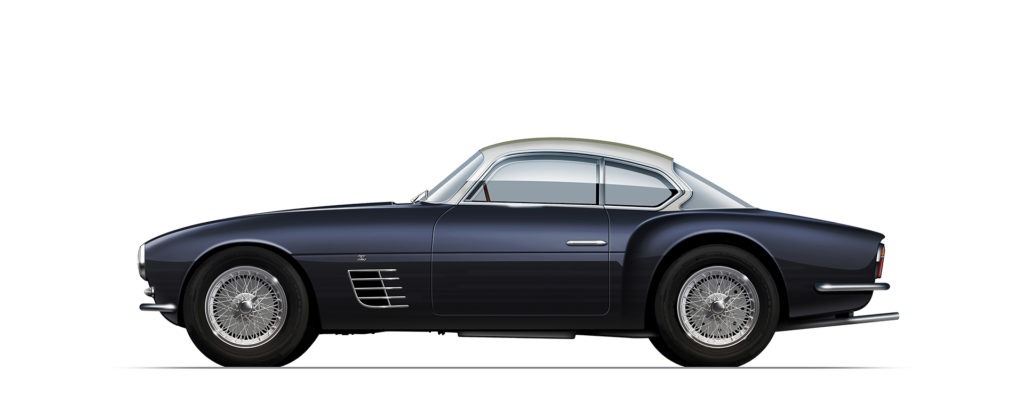
The Ferrari-Zagato story continued with a model that conveyed great class, the 250 GTZ. The car was commissioned by gentleman driver Vladimiro Galluzzi in 1956. Chassis no. 0512 GT was fitted with an indisputably elegant body, with the result that it was suitable for both racing and concours d’élégance. The decision to give it a refined two-tone grey and blue body, its compact, elegant lines, and the fact that it was a Ferrari Zagato, made it one of the most beautiful cars ever built. The 250 GTZ reiterated the same lines on a chassis of larger dimensions and a stance that responded to the car’s racing aspirations. The larger dimensions, the paintwork that separated the sides from the roof, the slightly different front and the large spoked wheels, transformed an unusual shape into an object of unparalleled beauty.
250 GTZ Coupé Corsa #0537 1956
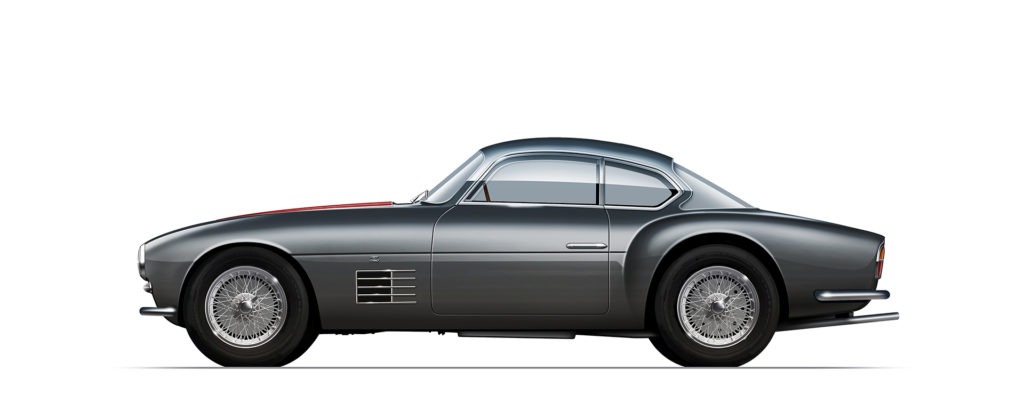
In May 1956, Zagato created the second 250 GTZ on chassis no. 0537 GT. The car was built for Camillo Luglio, who consolidated the tradition of gentlemen drivers who invested in a Zagato body to boost the speed and performance of cars that were already extremely competitive. The car was commissioned and built in record time, and the white or grey paint that can be seen in a few rare period photographs, was in fact a coat of primer on raw sheet metal. The car was delivered shortly before the Vermicino-Rocca Di Papa race, in which Luglio took second place, even though he was not familiar with the car or the circuit. The car’s definitive paintwork would be grey with a longitudinal red band on the bonnet. It won numerous events, including the Coppa D’oro of the Dolomites, the Giro delle Calabrie, and the Italian championship in 1956.
250 GTZ Competizione #0665 1957

The third 250 GTZ had chassis number 0665 GT. It was also commissioned by Camillo Luglio, following his important wins in his first Ferrari Zagato, to compete in the Italian 1957 championship. Zagato’s mastery and Luglio’s racing experience combined to boost both performance and driveability. The front end distanced itself most from the bodies created for the Ferrari 250, and the extreme aerodynamic research resulted in the front light clusters being moved back and faired with plexiglas lids that were a distinctive feature of Zagato’s output. The original rear pillar was modified, filling in the section that appeared angular on previous versions, but retaining the original design.
250 GTZ Lusso #0689 1957
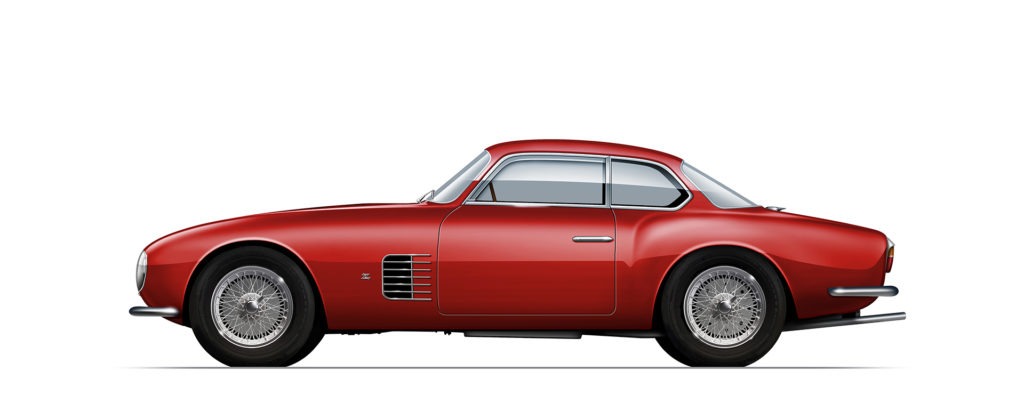
The 250 GTZ built on chassis no. 0689 GT, the fourth in the series that Zagato prepared for Ferrari, was built for gentleman driver Vittorio De Micheli. This car, with its red paintwork boasted a significant difference compared to the previous versions: it was without the double “bubble” on the roof. The shape of the side grilles was also modified, like the interiors which were elegant once again. It is interesting to note that each version was an evolution of the previous model. On De Micheli’s car, the front end was faired like Luglio’s car, but was even more aerodynamic and smoother at the bottom. This Ferrari Zagato also won numerous racing trophies, particularly between 1958 and 1959.
250 GTZ Prototipo #1367 1959
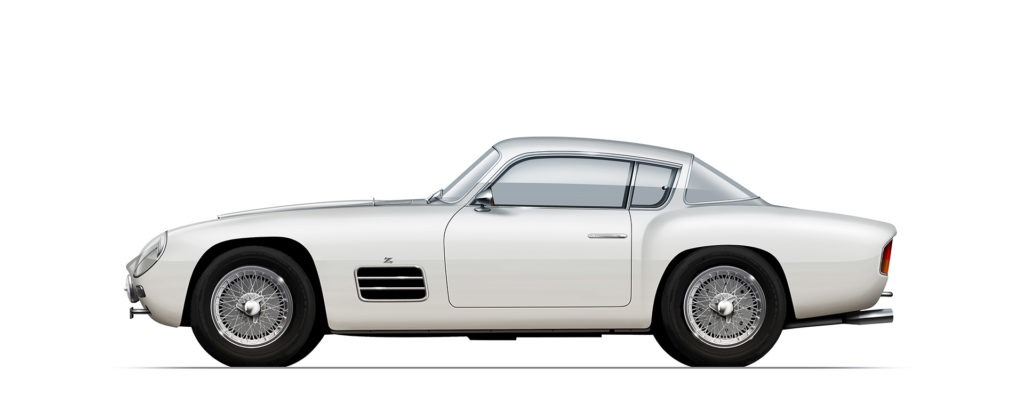
The car with chassis number 1367 was the last of the five 250 GT cars with bodies made by Zagato in the Fifties. This one was built in 1959 and although it was intended for racing, it was never used for this purpose. Compared to its forebears, this car had more delicate, refined styling, and a line that could easily have been used for a small production run. The structure of the front was new, particularly the front grille, the shape of the air inlets and the entire rear end. The windows pointed up and not down, the tail had two long protruding fins, and the rear window had lost the typical styling of the previous models. It did not have the characteristic Double Bubbles but the perspex headlight covers and the minimal bumpers could only have been designed by Zagato.
3Z Spider 1971
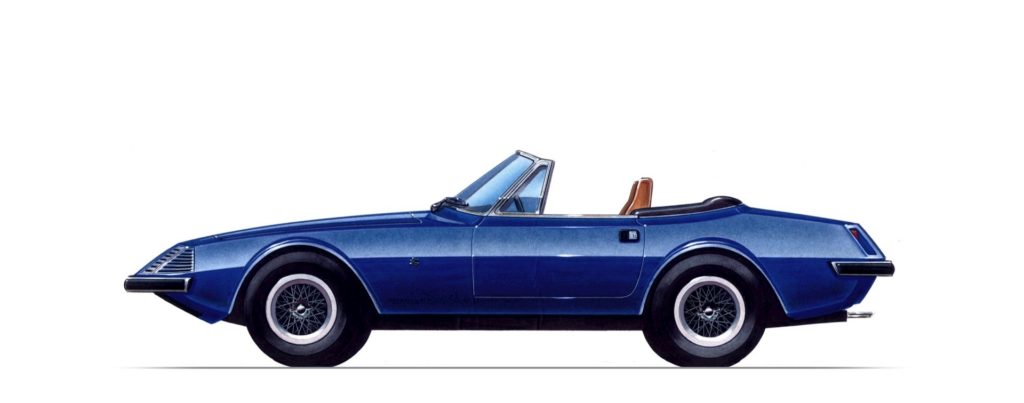
1971 surprised everyone with a new chapter in the collaboration between Ferrari and Zagato. More than twenty years had passed since the 166 Panoramica when the two big names appeared together again, on the 3Z built for Luigi Chinetti on chassis no. 2491 GT. Designed by Giuseppe Mittino, who had been in charge of projects and design at Zagato since 1970, this 12-cylinder model was decidedly angular and aggressive. It featured several original solutions such as the mobile lids with slits like those on the helmet of an ancient suit of armour, that hid the front light clusters, and the position of the rear lights recessed into the body. The car reflected Zagato’s philosophy of the moment – styling with clean, strong lines on geometric volumes – which had already been adopted successfully on the Alfa Romeo Junior Z, the first wedge-shaped car of its day.
330 GTC Convertibile 1974
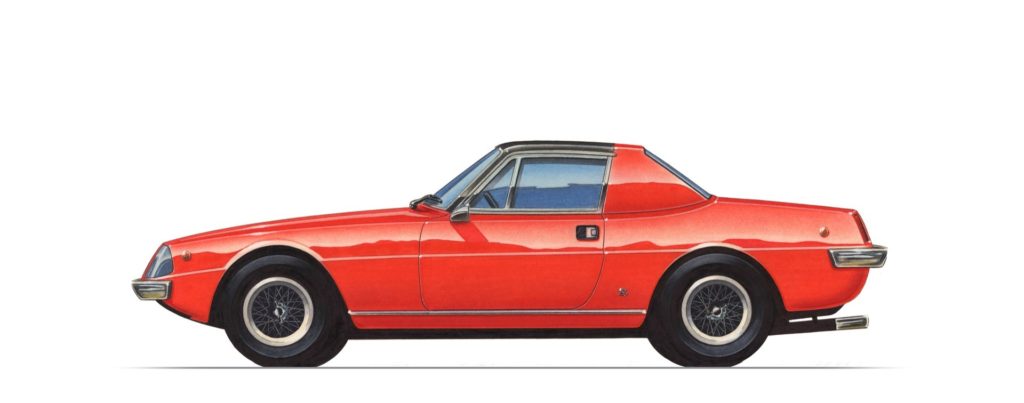
In 1974, Chinetti commissioned the 330 Convertibile Zagato. Zagato’s tenth car based on a Ferrari chassis was inspired by the 3Z Spider, albeit with significant changes. The name Convertibile reflected the type of body, which this time was fitted with rear pillars and a “targa” type removable rigid roof. The tail was higher and heavier and did not slope down as it did on the blue version. The front headlights were visible, but veiled with an innovative darkened plexiglas cover that was rectangular and flush with the body. The rear light clusters were also modified and recessed in smaller niches than before. The car, which was a light red, looked strong and marginally heavier than the Spider, which was probably Chinetti’s intention, so as to bring out the Convertible element. The catastrophic Oil Crisis in the mid Seventies started the inevitable decline of this type of personal luxury item. And the 330 Convertible was the only one of its type.
348 Elaborata 1989
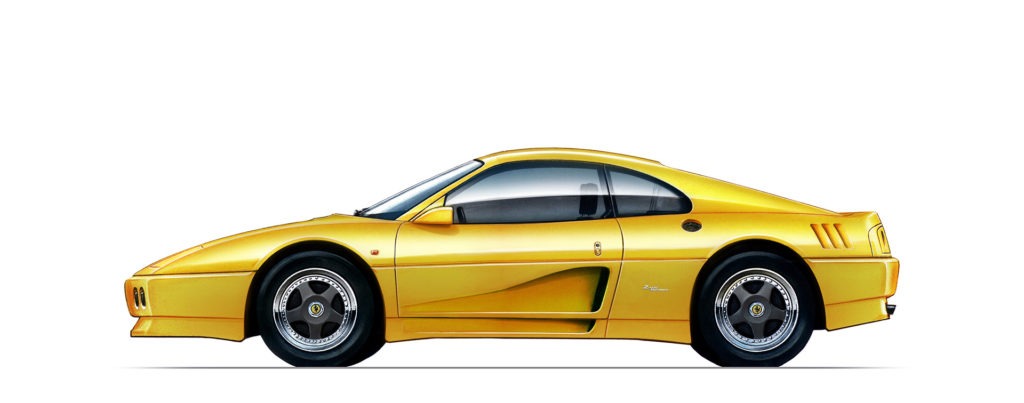
In 1991, the enterprising spirit of Carrozzeria Zagato and the mutual attraction between Ferrari and the design firm produced the Ferrari 348 tb Elaborazione Zagato. Anything that was superfluous was removed in favour of functionality: the fake front air inlet on the basic model was replaced by a solid grille holding two additional headlights and a small black horse. The legendary double bubbles returned, and the shell of the door mirrors was redesigned, together with the handles of the doors and the rear hatch. Other novelties were the bonnet (into which a porthole of safety glass was inserted so that the engine could be seen even with the bonnet closed, anticipating an important feature of later Ferraris), the new circular rear light clusters without their plastic grille, another element later borrowed by Ferrari, and star-shaped wheel rims by OZ painted black with a chromed external profile.
F.Z.93 1993
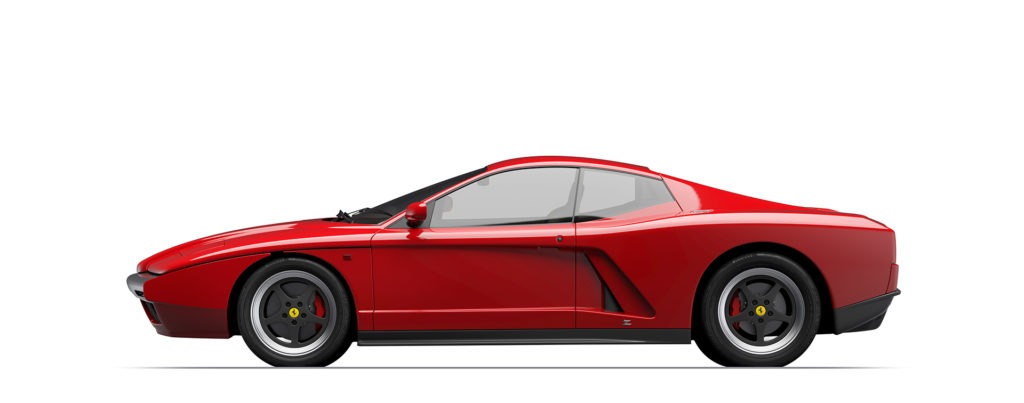
Andrea Zagato’s first Ferrari was built in 1993 based on the Testarossa and was known as the FZ93 or Ferrari Zagato 1993. The lines recalled those of a fighter aircraft or a stylised Formula one car, particularly the front and rear ends where one could catch a glimpse of the nose and fins of a racing car. The bonnet resembled a Formula one model both for the design of the central part and for the fact that it did not point down to the road like all traditional “super cars” but was “suspended” above the front bumper. The front end had two large air inlets, similar to those under the wings of a fighter plane. The first example had two-tone paintwork, black in the lower part of the body and red on the top and the remainder. It later appeared with more homogeneous all-over red paintwork.
575 GTZ 2006
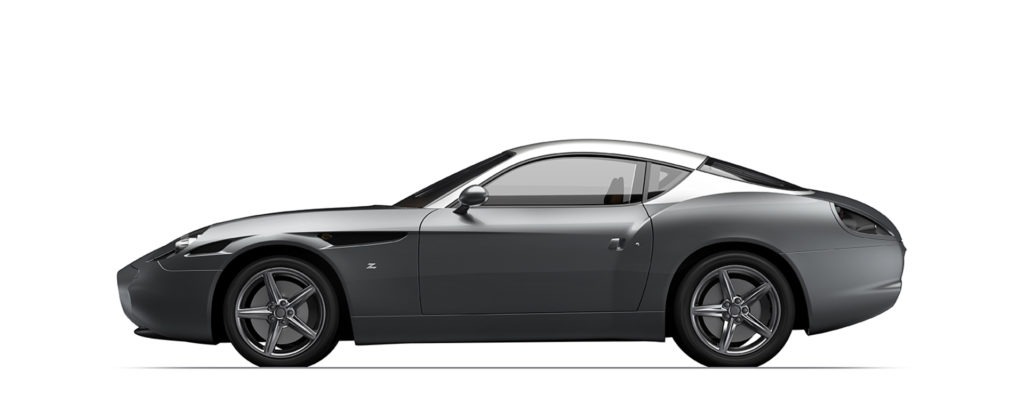
This special 575M was built by Zagato for Japanese Ferrari collector Yoshiyuki Hayashi, and announced at the 2006 Geneva Motor Show. Designed to recall the 250 GT Berlinetta Zagato and commemorate the 50th anniversary of the 250 range, the GTZ was officially endorsed by Ferrari and includes Zagato’s trademark double-bubble roofline, the custom coach made bodywork recalling the styling of the Ferrari models of the 1960s and two-tone paint scheme. Six cars were built in total. The mechanical components were unchanged.
Images and stories courtesy of Zagato


